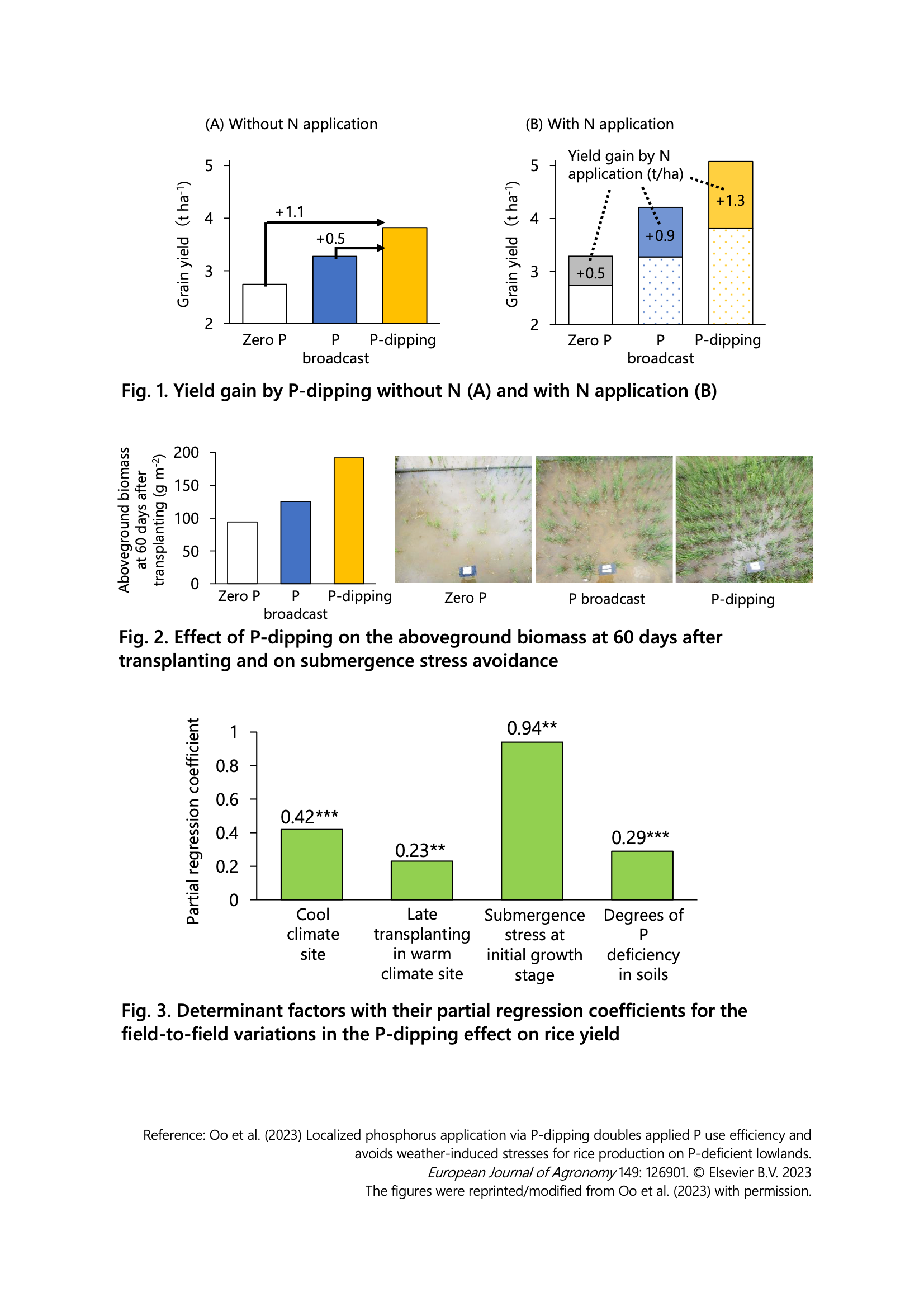Localized phosphorus application via P-dipping is effective in avoiding flooding damage for lowland rice production
Description
To achieve higher production with minimal environmental impact in sub-Saharan Africa (SSA), it is crucial to make technical transitions from low-input to nutrient-use-efficient production systems. P-dipping, a localized phosphorus (P) application on seedling roots, is a potential approach to enable such a transition for lowland rice production. However, empirical evidence on the effectiveness of this approach in smallholders’ heterogeneous field conditions is lacking. Therefore, 18 on-farm trials were implemented by applying three P application treatments (zero P; P broadcast at 13.1 kg P ha−1; P-dipping at 13.1 kg P ha−1) with and without N top-dressing (60 kg N ha−1) under a range of topographic, edaphic, and climatic conditions in the highlands of Madagascar.The P-dipping method had greater yields, exceeding by 1.1 t ha−1 vs. zero P and by 0.5 t ha−1 vs. P broadcast on average under the non-N-applied condition. The yield advantage of P-dipping was enlarged with N application, and thus, the effect of N on grain yield was greater in P-dipping than in zero P or P broadcast (Fig. 1). The P-dipping effect was increased when the fields had erratic water levels after transplanting, which was associated with vigorous initial growth and avoidance of submergence stress (Fig. 2). Multiple regression analysis detected that the effect of P-dipping on grain yield was prominent not only in fields with initial submergence stress but also in fields at high elevation/cool climate site and late-transplanted fields at low elevation/warm climate site where P-dipping alleviated late-season low-temperature stress by shortening days to heading (Fig. 3). This study revealed that the effect of P-dipping is consistent in various P-deficient soils and is enhanced by combining with N topdressing and when fields are prone to late-season cold stress or early-season submergence stress. The results of this study show that P-dipping has the potential to improve fertilizer use efficiency and help farmers cope with frequent flooding. The technology is expected to contribute to stable and sustainable rice production in sub-Saharan Africa as its use expands.
Figure, table
- Research project
- Program name
- Term of research
-
FY2017-2023
- Responsible researcher
-
Aung Zaw Oo ( Crop, Livestock and Environment Division )
Tsujimoto Yasuhiro ( Crop, Livestock and Environment Division )
ORCID ID0000-0001-7738-9913KAKEN Researcher No.: 20588511Rakotoarisoa Njato Mickaël ( Centre National de Recherche appliquée au Développement Rural, Madagascar )
Andrianary Haja Bruce ( University of Antananarivo )
- ほか
- Publication, etc.
-
Oo et al. (2023) European Journal of Agronomy 149: 126901.https://doi.org/10.1016/j.eja.2023.126901
- Japanese PDF
-
2023_B10_ja.pdf586.75 KB
- English PDF
-
2023_B10_en.pdf243.88 KB
* Affiliation at the time of implementation of the study.

